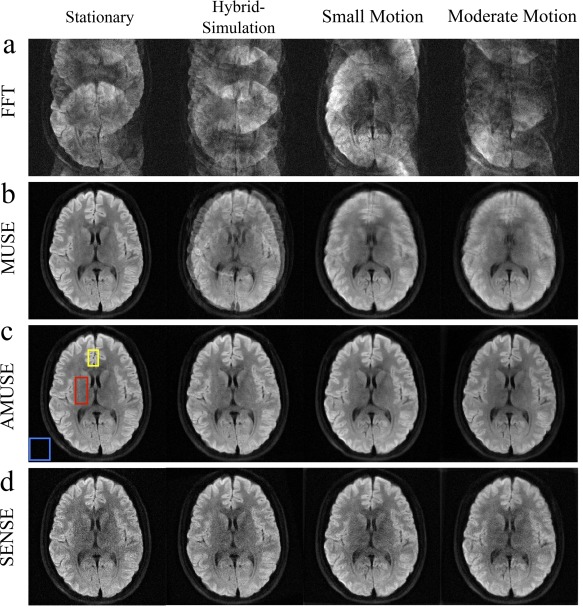Figure 5.

Reconstruction of multishot diffusion MRI data using direct fast Fourier transform (FFT), multiplexed sensitivity encoding (MUSE), augmented MUSE (AMUSE), and sensitivity encoding (SENSE)‐based motion correction. The AMUSE method simultaneously corrects motion‐induced phase errors and macroscopic motion. Four types of subject motion are evaluated, including stationary, hybrid‐simulation (combining data from two scans, in which subject head is stationary during acquisition but rotates about 15° between scans), small motion (about ± 5° rotation every 10–15 sec) and moderate motion (about ± 10° rotation every 10–15 sec). FFT and MUSE are corrupted by subject motion, whereas both AMUSE and SENSE reduce the motion artifacts. AMUSE further provides higher SNR. Figure reproduced with permission from Ref. 38.
